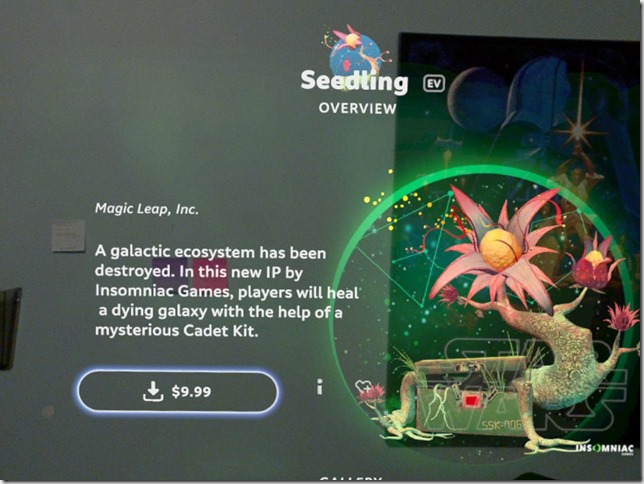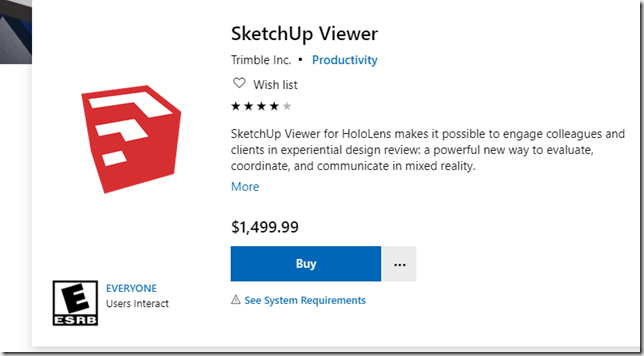The Magic Leap store (aka Magic Leap “World”) has published its first app for $9.99. This is an app created by Insomniac but published by Magic Leap itself, so in some sense is a trial run for its store. “Seedling” already made its first appearance at the Leap conference in Los Angeles in October.
$9.99 is also an interesting price, perhaps signaling a target for apps on Magic Leap devices. Back in the day, $.99 was the target price for Apple Store apps. When Microsoft came out with Windows Phone, they marketed the idea that apps should sell for more than that on their platform (more towards $1.49 or $1.99). On Steam, the magic price point for games seems to be $20 to $60.
For the HoloLens, which uses the online Windows Store as its distribution channel, the most frequent price point seems to be free. This makes sense since even with a purported 50K HoloLens devices currently in the world, the total market is still too small to support a reasonably priced game. Trimble initially went the other way with their SketchUp Viewer, which lists for about $1.5K, apparently trying to recoup their investment with a high price tag. Their subsequent HoloLens offering, part of a collaboration service, is free.
In order to buy Seedling, I had to go into my online magic leap creator’s account and add a payment method. This is an interesting aspect of all current VR and AR devices: entering data is rarely – and entering financial data is never – done through the actual device. We still live in a world where one must switch to either a phone or a computer in order to establish the credentials that will be used through the device.
This is ultimately a pre-NUI UX problem involving the difficulty of doing data entry without a keyboard and mouse (though we are finally getting comfortable with doing this on our smart phones, thanks to the rising comfort level with using web apps on tiny screens). This will be an ongoing problem for developing apps for the enterprisy market, where the exchange of data is pretty key.
Who knows, maybe solving this UX dilemma for the enterprise will end up being the killer app we’ve all been waiting for. I wonder how much someone would charge for it?


